![]()
![]()
Invited Short Talks
(Speakers listed below in name alphabet order)
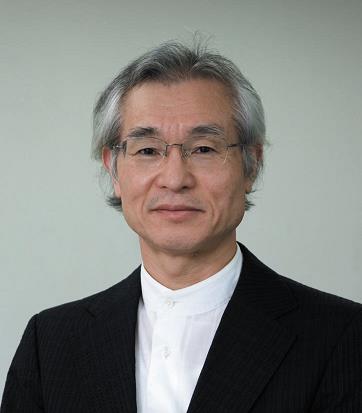
Fumiyuki Adachi
(IEEE/IEICE Fellow)
Distinguished Professor,
Tohoku
University, Japan
Title:
Spectrum-Energy Efficiency of Wireless Networks (Talk
Slides)
Time:
10:40-11:20, Tuesday, Feb. 4, 2014
Abstract:
The
volume of wireless broadband data traffic has been continuously increasing.
Because of limited available frequency bandwidth, the spectrum efficiency
was the most important concern for the last few decades. However, due to the
recent explosive popularity of broadband wireless data services, more and
more attention has been paid to the energy efficiency. The spectrum
efficiency and energy efficiency are in a tradeoff relationship. Probably,
the most effective solution to improve both the spectrum and energy
efficiencies at the same time is to use pico-cell or nano-cell structured
wireless networks. However, an inherent nature of wide range of the user
mobility in wireless networks is problematic for nano-cell structured
networks. Remember that the traffic distribution is not uniform and that
there may be only a few scattered hotspot areas of heavy traffic within a
macro-cell area. The heterogeneous network consisting of macro-cell and nano-cell
structures may be a practical solution. In this talk, we will discuss the
spectrum-energy efficiency tradeoff and the need of heterogeneous network as
a practical solution toward spectrum and energy efficient wireless networks.
Biography:
Fumiyuki Adachi received the B.S. and Dr. Eng. degrees in electrical
engineering from Tohoku University, Sendai, Japan, in 1973 and 1984,
respectively. In April 1973, he joined the Electrical Communications
Laboratories of Nippon Telegraph & Telephone Corporation (now NTT) and
conducted various researches on digital cellular mobile communications. From
July 1992 to December 1999, he was with NTT Mobile Communications Network,
Inc. (now NTT DoCoMo, Inc.), where he led a research group on Wideband CDMA
for 3G systems. Since January 2000, he has been with Tohoku University,
Sendai, Japan, where he is a Distinguished Professor at the Dept. of
Communications Engineering, Graduate School of Engineering. His research
interest includes wireless signal processing including wireless access,
equalization, transmit/receive antenna diversity, adaptive transmission, and
channel coding. He is an IEEE Fellow and an IEICE Fellow. He was a recipient
of the IEEE Vehicular Technology Society Avant Garde Award 2000, IEICE
Achievement Award 2002, Thomson Scientific Research Front Award 2004,
Ericsson Telecommunications Award 2008, Telecom System Technology Award
2010, Prime Minister Invention Award 2010, and KDDI Foundation Excellent
Research Award 2012.
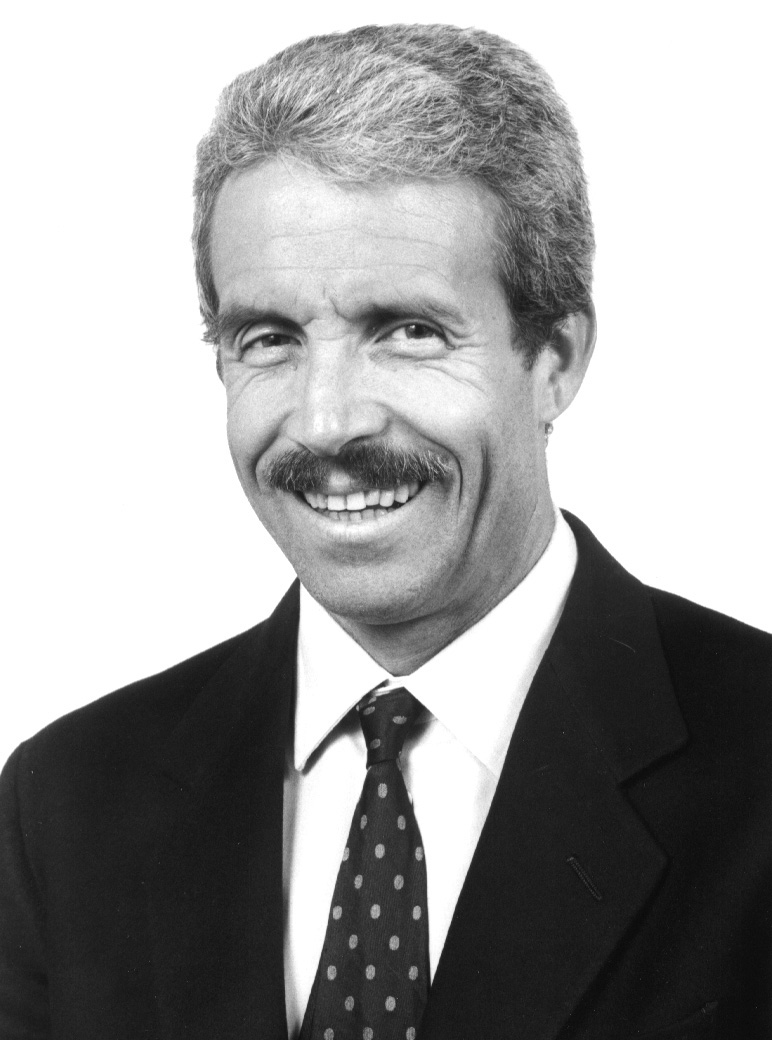
Mario Gerla
(IEEE Fellow)
Professor, University of California, Los Angeles, USA
Title: A New
Approach to Coding in Content-Based MANETs
Time:
10:00-10:40, Tuesday, Feb. 4, 2014
Abstract:
In content-based
mobile ad hoc networks (CB-MANETs), random linear network coding (NC) can be
used to reliably disseminate large files under intermittent connectivity.
Conventional NC involves random unrestricted coding at intermediate nodes.
This however is vulnerable to pollution attacks. To avoid attacks, a brute
force approach is to allow mixing only at the source. However, source
restricted NC generally reduces the robustness of the code in the face of
errors, losses and mobility induced intermittence. CB-MANETs introduce a new
option. Caching is common in CB MANETs and a fully reassembled cached file
can be viewed as a new source. Thus, NC packets can be mixed at all sources
(including the originator and the intermediate caches) yet still providing
protection from pollution. The hypothesis we wish to test in this paper is
whether in CB-MANETs with replicated caches of a file, the performance (in
terms of robustness) of the coding restricted to full caches equals that of
unrestricted coding. In this paper, we examine and compare four options:
unrestricted coding, full cache coding, source only coding, and no coding.
As expected, we find that full cache coding remains competitive with
unrestricted coding while maintaining full protection against pollution
attacks.
Biography:
Dr. Mario Gerla is a Professor in the Computer Science Dept at UCLA.
He holds an Engineering degree from Politecnico di Milano, Italy and the
Ph.D. degree from UCLA. He became IEEE Fellow in 2002. At UCLA, he was part
of the team that developed the early ARPANET protocols under the guidance of
Prof. Leonard Kleinrock. He joined the UCLA Faculty in 1976. At UCLA he has
designed network protocols including ad hoc wireless clustering, multicast (ODMRP
and CODECast) and Internet transport (TCP Westwood). He has lead the ONR
MINUTEMAN project, designing the next generation scalable airborne Internet
for tactical and homeland defense scenarios. He is now leading several
advanced wireless network projects under Industry and Government funding.
His team is developing a Vehicular Testbed for safe navigation, content
distribution, urban sensing and intelligent transport. Parallel research
activities are wireless medical monitoring using smart phones and cognitive
radios in urban environments.
He has
served as a Technical Program Committee member of many international
conferences, and is active in the organization of conferences and workshops,
including MedHocNet and WONS. He serves on the IEEE TON Scientific Advisory
Board. He was recently recognized with the annual MILCOM Technical
Contribution Award for 2011 and the IEEE Ad Hoc and Sensor Network Society
Achievement Award in 2011.

Yunghsiang S. Han (IEEE Fellow)
Chair
Professor, National Taiwan University of Science and Technology,
Taiwan
Title:
Coding
theory for reliable signal processing (Talk
Slides)
Time:
10:00-10:40, Wednesday, Feb. 5, 2014
Abstract:
With increased dependence on technology in daily life, there is a need to
ensure their reliable performance. There are many applications where we
carry out inference tasks assisted by signal processing systems. A typical
system performing an inference task can fail due to multiple reasons:
presence of a faulty component, a malicious component providing corrupt
information, or there might simply be an unreliable component. Therefore, it
is important to design systems which perform reliably even in the presence
of such unreliable components. Coding theory based techniques provide a
possible solution to this problem. In this position paper, we survey some
recent developments in using coding theory based techniques for the design
of some signal processing applications. As examples, we consider distributed
classification and target localization tasks in wireless sensor networks. We
also consider the more recent application of crowdsourcing and discuss how
coding based techniques can be used to mitigate the effect of unreliable
crowd workers in the system.
Biography:
Yunghsiang S. Han received B.Sc. and M.Sc. degrees in electrical engineering
from the National Tsing Hua University, Taiwan, in 1984 and 1986, respectively,
and a Ph.D. degree from the School of Computer and Information Science, Syracuse
University, NY, in 1993. He was with Hua Fan College of Humanities and
Technology, National Chi Nan University, and National Taipei University, Taiwan.
From August 2010, he is with the Department of Electrical Engineering at
National Taiwan University of Science and Technology as a chair professor. Dr.
Han's research interests are in error-control coding, wireless networks, and
security. Dr. Han has conducting state-of-the-art research in the area of
decoding error-correcting codes for more than twenty-four years. He first
developed a sequential-type algorithm based on Algorithm A* from artificial
intelligence. At the time, this algorithm drew a lot of attention since it was
the most efficient maximum-likelihood decoding algorithm for binary linear block
codes. Dr. Han has also successfully applied coding theory in the area of
wireless sensor networks. He has published several highly cited works on
wireless sensor networks such as random key pre-distribution schemes. He also
serves as the editors of several international journals. Dr. Han was the winner
of the Syracuse University Doctoral Prize in 1994 and a Fellow of IEEE.
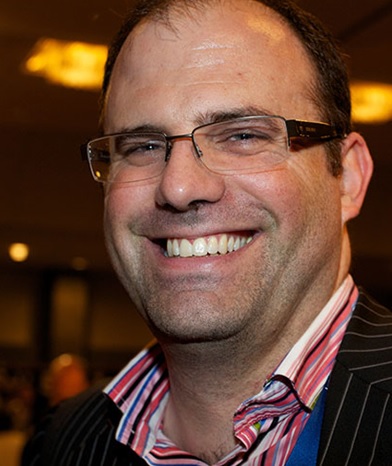
Robert W.
Heath (IEEE Fellow)
Professor, University of Texas at Austin, USA
President
and CEO, MIMO Wireless Inc, USA
Chief
Innovation Officer, Kuma Signals LLC, USA
Title:
Millimeter-wave Cellular Channel Models for System Evaluation (Talk
Slides)
Time:
11:20-12:00, Tuesday, Feb. 4, 2014
Abstract:
With
huge amount of (potentially) available spectrum, millimeter-wave (mmWave)
spectrum is a promising candidate for the fifth generation cellular
networks. This paper presents a channel model for evaluating system level
performance in mmWave cellular networks. The model uses insights from
measurement results that show mmWave is sensitive to blockages revealing
different path loss characteristics between line-of-sight and
non-line-of-sight links. The proposed model is used to compare microwave and
mmWave networks in simulations. An insight is that mmWave networks can
provide comparable coverage probability with a density deployment, leading
to much higher data rates thanks to the large bandwidth available in the
mmWave spectrum.
Biography:
Robert W. Heath Jr. received the Ph.D. in EE from Stanford University. He is
currently a Professor in the Department of Electrical and Computer Engineering
at The University of Texas at Austin and Director of the Wireless Networking and
Communications Group. He is also the President and CEO of MIMO Wireless Inc and
Chief Innovation Officer at Kuma Signals LLC. Prof. Heath is a recipient of the
2012 Signal Processing Magazine Best Paper award and the 2010 and 2013 EURASIP
Journal on Wireless Communications and Networking best paper awards. He is the
recipient of the David and Doris Lybarger Endowed Faculty Fellowship in
Engineering, is a registered Professional Engineer in Texas, and is a Fellow of
the IEEE. He is a co-author on the upcoming book mmWave Wireless Communication:
Systems and Circuits.
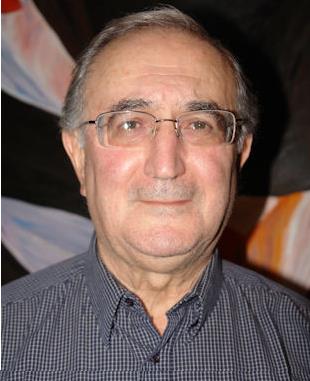
Michel
Kadoch
Professor,
Ecole de
technologie superieure ETS,
Canada
Title:
Joint Fountain Code-Network Coding Scheme for Reliable Communication in Wireless
Networks (Talk Slides)
Time:
10:40-11:20, Wednesday, Feb. 5, 2014
Abstract:
Cooperative communications, where parallel relays forward information to a
destination node provide a new dimension to the design space of wireless
networks in which coverage and throughput may be significantly enhanced at
the cost of a loss in spectral efficiency. In practice, the performance of
data transmission often degrades due to the slow and deep fading of wireless
channel even though various channel coding are used at the transmitter and
receiver. However, it appears that no fixed rate channel coding is capable
of driving the outage probability to zero without channel state information
at the transmitter. In this paper we employ rateless coding and network
coding for reliable communication in wireless relay network. Specially we
propose joint network and fountain decoding (JNFD) that seamlessly couples
fountain coding and network coding, and can effectively combat the
detrimental effect of fading of wireless channels. Simulation results show
that the propose JNFD demonstrates the significant performance improvement
against other schemes.
Biography:
Michel
Kadoch (S’67, M’77, SM’04) received the B. Eng from Sir George Williams
University (Canada) in 1971, the M. Eng from Carleton (Canada) in 1974, MBA from
McGill (Canada) in 1983 and the Ph.D from Concordia (Canada) in 1991. He is a
full professor at Ecole de technologie superieure ETS (Canada) and the director
of the Master Program in engineering. He is active in research mostly in
performance analysis and network management and control in wired as well as
wireless networks. He is the director of the research laboratory LAGRIT at ETS.
He is also an adjunct professor at Concordia University (Canada). He is
presently working on Cognitive Radio, Cooperative communication, Cross layer,
and Public Safety in wireless Ad hoc and Mesh networks. Professor Kadoch has
published many articles and is the author of a book « Protocoles et reseaux
locaux » (Edition ETS, 2012). He is serving as a reviewer for journals and
conferences and for grants for NSERC as well as track TPC for ICCCAS, WiMob. He
has been involved for many years at ITU-T as a special rapporteur and with the
industry namely Teleglobe Canada, CAE, and Communication Canada. He has been a
consultant with Harris, Bell South, BC Tel, Concert and British Telecom UK, as
well as the CTO (Commonwealth Telecommunication Organization).
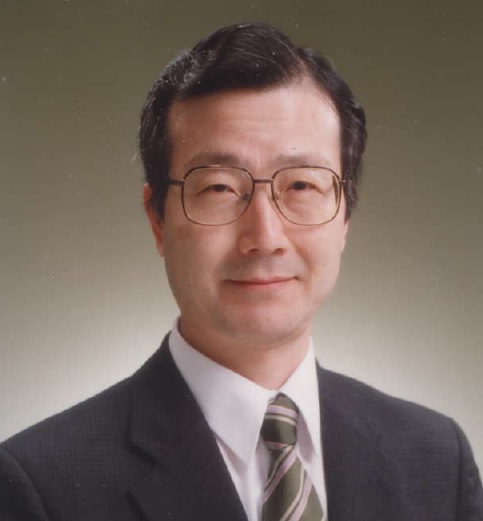
Kenichi
Mase (IEEE/IEICE Fellow)
Prefessor Emeritus, Niigata University, Niigata, Japan
Title: Wide-Area Real-Time Surveillance Using Electric Vehicles and
Helicopters for Disaster Recovery (Talk
Slides)
Time:
16:00-16:40, Tuesday, Feb. 4, 2014
Abstract:
In this presentation,
we argue that small electric vehicles (mini-EVs) may become increasingly
prevalent in the future, leading to the realization of the so-called
ubiquitous EV society. EVs have the potential to be a great resource for
recovery from large-scale disasters. Specifically, EVs in a disaster area
can link together to form an EV-based mobile ad hoc network (EVANET). Two
use cases of EVANET are emergency networks and disaster
area surveillance. We present the concept of three-dimensional
mobile surveillance (3DMS). In 3DMS, EVs on the ground cooperate with small
lightweight unmanned electric helicopters (mini-EHs) to cooperatively
collect and deliver information about the disaster area. We present an
effective method of solving the problem of limited continuous flying time of
EHs. We present a simple model for area zoning assuming a wide square area
and one-dimensional EV placement. Specifically, each EV–EH pair is in charge
of a non-overlappingsub-area and the surveillance data are temporarily
stored in the EV. The partner EH is used to transfer the surveillance
data, which are obtained in the sub-area in addition to those transferred
fromthe immediate downstream EV, to the upstream EV via carry and
forward. Finally, we investigate the requirements for a mini-EH in 3DMS. In
particular, we demonstrate that autonomous piloting is necessary and present
prototypes of a mini-EH.
Biography:
Kenichi Mase received the B. E., M. E., and Dr. Eng. Degrees in
Electrical Engineering from Waseda University, Tokyo, Japan, in 1970, 1972, and
1983, respectively. He joined Musashino Electrical Communication Laboratories of
NTT Public Corporation in 1972. He was Executive Manager, Communications Quality
Laboratory, NTT Telecommunications Networks Laboratories from 1994 to 1996 and
Communications Assessment Laboratory, NTT Multimedia Networks Laboratories from
1996 to 1998. He joined Niigata University in 1999 and is now Professor
Emeritus, Niigata University, Niigata, Japan. He received IEICE Best Paper Award
in 1994, the Telecommunications Advanced Foundation Award in 1998, and Best
Paper Award, Internatioal Academy, Research, and Industry Association in 2013.
His research interests include communications network design and traffic
control, quality of service, mobile ad hoc networks and wireless mesh networks.
He was President of IEICE-CS in 2008 and Vice President of IEICE in 2011 and
2012. Prof. Mase is an IEEE and IEICE Fellow.
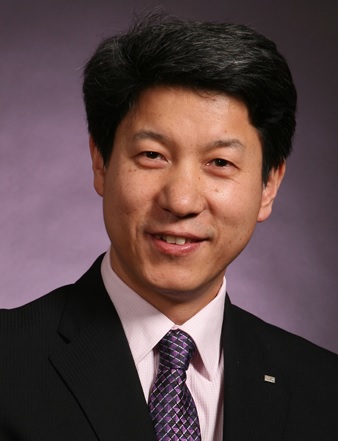
Zhisheng
Niu (IEEE/IEICE Fellow, IEEE Distinguished Lecturer)
Professor, Tsinghua University, China
Title:
Energy-Delay Tradeoff in
Hyper-Cellular Networks with Base Station Sleeping Control (Talk
Slides)
Time:
16:40-17:20, Tuesday, Feb. 4, 2014
Abstract:
One of the key approaches to make the mobile communication networks more GREEN (Globally Resource-optimized and Energy-Efficient Networks) is to have the cellular architecture and radio resource allocation more adaptive to the environment and traffic variations, including making some lightly-loaded base stations (BSs) go to sleep. This is the concept of so-called TANGO (Traffic-Aware Network planning and Green Operation) and CHORUS (Collaborative and Harmonized Open Radio Ubiquitous Systems) published by the author earlier. To realize this, a new cellular framework, named hyper-cellular networks (HCN), has been proposed, in which the coverage of control signals is decoupled from the coverage of data signals so that the data coverage can be more elastic in accordance with the dynamics of traffic characteristics and QoS requirements. Due to this elasticity of HCN, some delay-insensitive users may have to experience some delay or other kind of QoS degradation when traffic load is high in order to save energy, i.e., energy can be traded off by some delay. The fundamental question then arises: how much energy can be traded off by a tolerable delay?
In this talk, we characterize the tradeoffs between energy consumption and service delay in a base station with sleep mode operations by queueing models. The base station is modeled as an M/G/1 vacation queue with setup and close-down times, where the base station enters sleep mode if no customers arrive during the close-down time after the queue becomes empty and it starts to setup when it sees N arriving customers during its sleep period. Several closed-form formulas are derived to demonstrate the tradeoffs between the energy consumption and the mean delay by changing the close-down time, setup time, and N. It is shown that the relationship between the energy consumption and the mean delay is linear in terms of mean close-down time, but non-linear in terms of N. The explicit relationship between total power consumption and average delay with varying service rate is also analyzed theoretically, indicating that sacrificing delay cannot always be traded for energy saving. In other words, larger N may lead to lower energy consumption, but there exists an N* that minimizes the mean delay. We also investigate the maximum delay for certain percentage of service, which is closely related to the mean delay. In summary, the closed-form tradeoffs cast light on designing BS sleep control policies which aim to save energy while maintaining acceptable quality of service.
Biography:
Zhisheng Niu graduated from Northern Jiaotong University (currently Beijing Jiaotong University), Beijing, China, in 1985, and got his M.E. and D.E. degrees from Toyohashi University of Technology, Toyohashi, Japan, in 1989 and 1992, respectively. After spending two years at Fujitsu Laboratories Ltd., Kawasaki, Japan, he joined with Tsinghua University, Beijing, China, in 1994, where he is now a professor at the Department of Electronic Engineering and the deputy dean of the School of Information Science and Technology. His major research interests include queueing theory, traffic engineering, mobile Internet, radio resource management of wireless networks, and green communication and networks.
Dr. Niu has been an active volunteer for various academic societies, including council member of Chinese Institute of Electronics (2006-10), vice chair of the Information and Communication Network Committee of Chinese Institute of Communications (2008-12), Councilor of IEICE-Japan (2009-11), and membership development coordinator of IEEE Region 10 (2009-10). In particular, in IEEE Communication Society, he has been serving as an editor of IEEE Wireless Communication Magazine (2009-12), director of Asia-Pacific Region (2008-09), director for Conference Publications (2010-11), chair of Beijing Chapter (2001-08), and members of Award Committee (2011-13), Emerging Technologies Committee (2010-12), On-line Content Committee (2010-12), and Strategy Planning Committee. He has also been serving as general co-chairs of APCC’09/WiCOM’09, TPC co-chairs of APCC’04/ICC’08/WOCC’10/ICCC’12, panel co-chair of WCNC’10, tutorial co-chairs of VTC’10-fall/Globecom’12, and publicity co-chairs of PIMRC’10/WCNC’02.
Prof. Niu is a co-recipient of the Best Paper Awards from the 13th and 15th Asia-Pacific Conference on Communication (APCC) in 2007 and 2009, respectively, and received Outstanding Young Researcher Award from Natural Science Foundation of China in 2009. He is now the Chief Scientist of the National Fundamental Research Program (so called “973 Project”) of China "Fundamental Research on the Energy and Resource Optimized Hyper-Cellular Mobile Communication System" (2012-2016), which is the first national project green communications in China. He is the fellow of IEEE and IEICE, and a distinguished lecturer of IEEE Communication Society (2012-13).
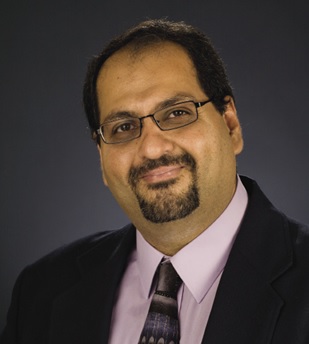
Ness B.
Shroff (IEEE Fellow)
Ohio
Eminent Scholar endowed chair in Networking and Communications, The Ohio State
University, USA
Title:
Designing
provably efficient Map-Reduce Schedulers: A probabilistic approach (Talk
Slides)
Time:
11:20-12:00, Wednesday, Feb. 5, 2014
Abstract:
We
consider the problem of minimizing the total flow time of arriving jobs
being served by a pool of machines under the so called constraint of phase
precedence. This is a common occurrence in various job scheduling settings,
and is becoming ubiquitous in the context of data center systems, where jobs
need to be processed through both "MAP" and "Reduce" procedures before
leaving the system. Under this setting one can show that no on-line
algorithm can achieve a constant competitive ratio (defined as the ratio
between the completion time of the online algorithm to the completion time
of the optimal non-causal off-line algorithm). We then construct a new,
slightly weaker metric of performance that we call the "efficiency ratio".
An online algorithm is said to achieve an efficiency ratio of $\gamma$ when
the flow-time incurred by that scheduler divided by the minimum flow-time
achieved over all possible schedulers is almost surely less than or equal to
$\gamma$. We then show a surprising property that for the flow-time problem
any work-conserving scheduler has a constant efficiency ratio in both
preemptive and non-preemptive scenarios. We develop an online scheduler with
a very small efficiency ratio (less than 2), and through simulations we show
that it outperforms the state-of-the-art schedulers.
This preliminary investigation suggests that this new metric could potentially yield a useful approach to analyze the performance (and thus design) of algorithms in general. It avoids the unlikely (measure zero) scenarios that need to be accounted for in competitive ratio analysis, yet retains the simplicity of such worse-case analysis.
Biography:
Ness
B. Shroff received his Ph.D. degree in Electrical Engineering from Columbia
University in 1994. He joined Purdue university immediately thereafter as an
Assistant Professor in the school of Electrical and Computer Engineering. At
Purdue, he became Full Professor of ECE in 2003 and director of CWSA in 2004, a
university-wide center on wireless systems and applications. In July 2007, he
joined The Ohio State University, where he holds the Ohio Eminent Scholar
endowed chair in Networking and Communications, in the departments of ECE and
CSE. From 2009-2012, he served as a Guest Chaired professor of Wireless
Communications at Tsinghua University, Beijing, China, and currently holds an
honorary Guest professor at Shanghai Jiaotong University in China. His research
interests span the areas of communication, social, and cyberphysical networks.
He is especially interested in fundamental problems in the design, control,
performance, pricing, and security of these networks. Dr. Shroff is a past
editor for IEEE/ACM Trans. on Networking and the IEEE Communication Letters. He
currently serves on the editorial board of the Computer Networks Journal, IEEE
Network Magazine, and the Networking Science journal. He has chaired various
conferences and workshops, and co-organized workshops for the NSF to chart the
future of communication networks. Dr. Shroff is a Fellow of the IEEE and an NSF
CAREER awardee. He has received numerous best paper awards for his research,
e.g., at IEEE INFOCOM 2008, IEEE INFOCOM 2006, Journal of Communication and
Networking 2005, Computer Networks 2003 (two of his papers also received
runner-up awards at IEEE INFOCOM 2005 and INFOCOM 2013), and also student best
paper awards (from all papers whose first author is a student) at IEEE WiOPT
2013, IEEE WiOPT 2012 and IEEE IWQoS 2006.
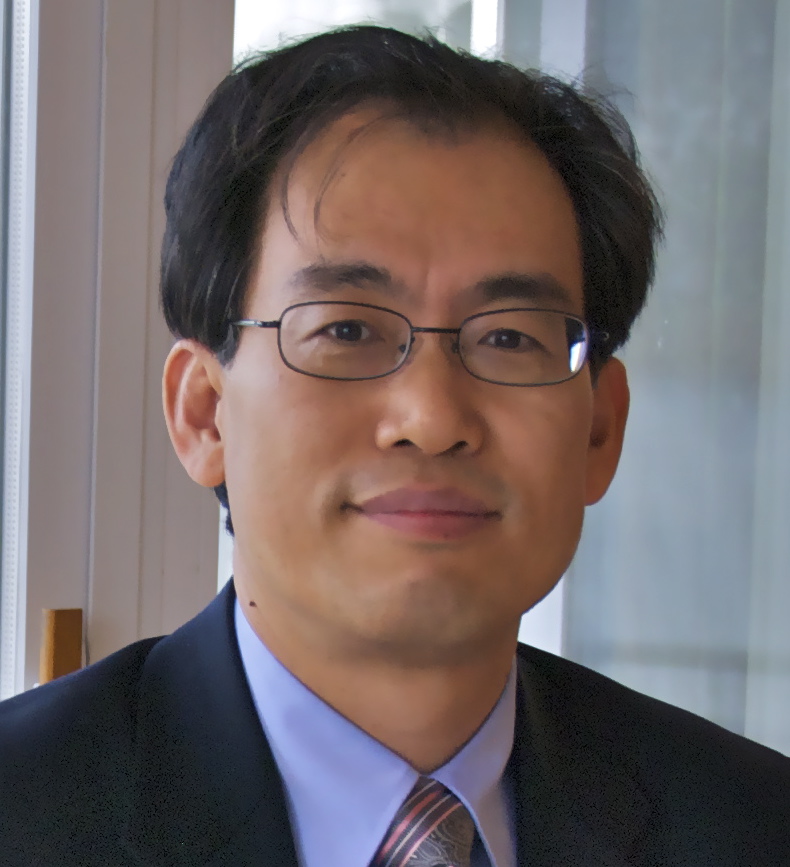
Min Song
Program Director, NSF,
USA
Title:
Spectrum Sharing:
Challenges, Directions, and Opportunities
Time:
16:00-0, Wednesday, Feb. 5, 2014
Abstract:
Spectrum in U.S. is managed by the National Telecommunications and Information Administration (NTIA) for federal government use or by the Federal Communications Commission (FCC) for commercial and other non-federal use. Historically, spectrum was licensed for exclusive use. Due to the lack of incentives for spectrum sharing, this policy caused significant majority of the federal spectrum underutilized. With the rapidly proliferated wireless applications, spectrum significantly falls short of the ever-increasing demand. This spectrum shortage has drawn attention from the White House. In June 2010, the President of the United States issued a memorandum, which calls on the Federal Government to identify 500 MHz of spectrum to be made available for wireless broadband use. To advance the goals of the President’s memorandum, the Wireless Spectrum R&D (WSRD) Senior Steering Group (SSG) was formed to coordinate spectrum-related research and development activities across the Federal government. The recent PCAST report further recommends the Secretary of Commerce to identify 1,000 MHz of Federal spectrum in which to implement shared-use spectrum pilot projects. Indeed, it is imperative that abundant spectrum to be made available to meet the demand and to spur the economy growth. In this talk, we will outline the critical challenges from bothtechnical and non-technical point of views, and suggest the future directions on spectrum sharing. Some of our current research projects on spectrum sharing and access will also be presented. At the end of the talk, four NSF programs supporting the research on spectrum sharing and access will be briefly introduced.
Biography:
Dr. Min Song is a Professor in the Electrical Engineering and Computer Science
Department at the University of Toledo. Currently, he is serving the National
Science Foundation (NSF) as a Program Director. Min received his PhD in Computer
Science from the University of Toledo in 2001. Min’s research interests include
the design, analysis, and evaluation of cognitive radio networks, wireless
sensor networks, wireless mesh networks, cyber physical systems, and wireless
ad-hoc networks. His research interests also include network security and mobile
computing. Min’s professional career is comprised of a total 25 years in
industry, academia, and government. Over the course of his career, Min has held
various leadership positions and gained experience in performing a wide range of
duties and responsibilities. Of most significance is his service with the NSF as
a Program Director since October of 2010. Min is the recipient of NSF CAREER
award.